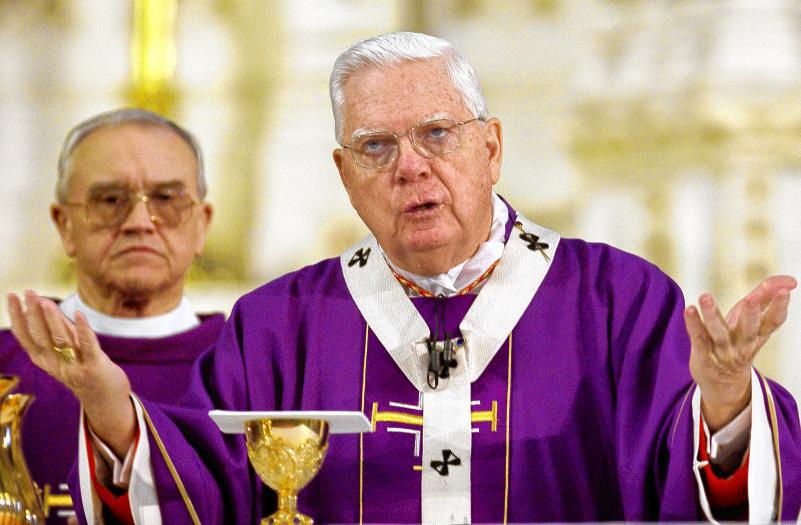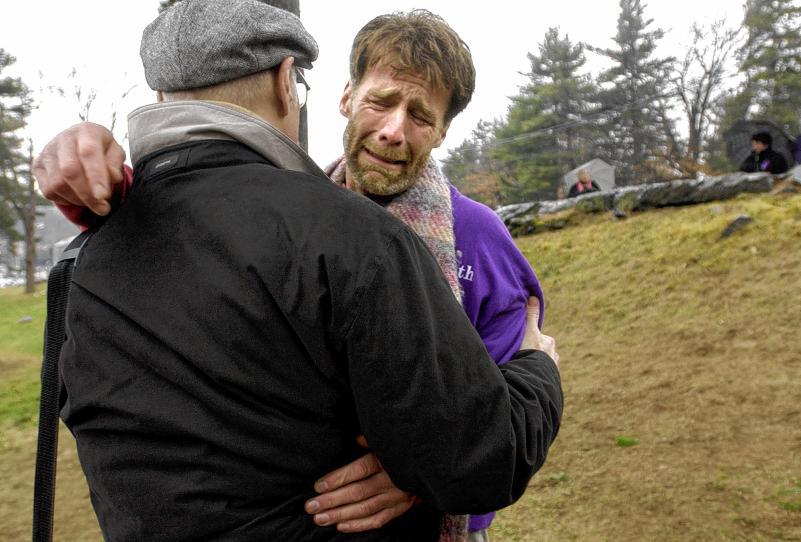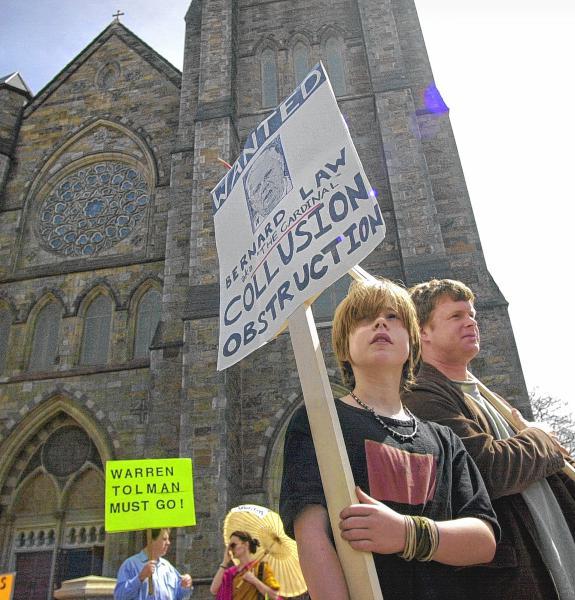|
Katy Burns: Truth under a brilliant ‘Spotlight’
Concord Monitor
The half-smile on Cardinal Bernard Law’s lips doesn’t really reach his watchful eyes as he looks at Marty Baron, the newly installed editor of the Boston Globe, who has been summoned to meet with the prelate in his private study. “I find this city flourishes when its great institutions work together,” says the cardinal. His words hang in the air for a few moments before Baron responds. “I’m of the opinion that for a newspaper to do its job, it has to stand on its own.” This is a succinct summation of the drama at the core of the movie Spotlight, now showing (through Thursday, Dec. 10) at Concord’s Red River Theatres. The film, which opened last month to near-universal acclaim, tells – pretty much accurately – the story of the Globe’s long investigation into the pedophile scandal that enveloped the Catholic Church in Boston and eventually across the country and the world. It was a case study of clerical power vs. secular power, and secular power won. The movie is brilliantly done. Although we all know what happened and how it ended, this story of the Church’s longtime denial of the existence of pedophile priests in Boston – even as it was shielding the offenders – is almost unbearably suspenseful. It’s well worth seeing. And it’s also, as more than one critic has remarked, perhaps the best depiction of a real newsroom – and of the hard slog of investigating and reporting – in any movie. Ever. Much has been made of actress Rachel McAdams’s decidedly non-glamorous depiction of reporter Sacha Pfeiffer, who was called “dowdy” by at least one reviewer. Well, duh. In her portrayal, McAdams wore attractive but casual tops with comfortable slacks and flat-heeled sensible shoes. No pencil skirts, no spike heels, but what she wore was what she needed to trudge the streets of Southie and Dorchester knocking on doors. It’s worth noting, by the way, this is all done with no unexpected romances, no trysts in editors’ office, no shouting of “stop the presses!” The investigative reporting was mostly time-consuming and downright tedious but an expensive undertaking, a true investment in public service. Boston, as the film makes clear, is perhaps the most heavily Catholic city in the nation, and its politicians are largely products of Catholic education, including Boston College. People identify not just by parts of town – Dorchester or East Boston – but by parish name. The Church is as much part of the city’s culture as the Red Sox. On the other hand, as several people in the film pointedly noted, Marty Baron was a native Floridian, fresh from the Miami Herald. He was Jewish. And – as he himself admitted – he didn’t even much like baseball. He wasn’t part of the culture. Baron became editor of the Globe on July 2, 2001. One of the first things he wanted to learn, as the head honcho, was how the paper worked – who the people were and what their jobs were. And so he came to focus on the Globe’s Spotlight unit, the oldest continuously functioning newspaper investigating team in the country. It picked its projects – often complicated corruption schemes, both private and public – with care, and it kept its work secret from all but the top bosses. It could take months to find a suitable topic, many more months – up to a few years – to complete the complex investigations and to flesh out a story before it could be written and printed. That, in an increasingly straitened news provider business, can take such a huge commitment of resources. Only a few organizations today can afford it. Among the newspapers, that’s pretty much limited to the biggest players – including the New York Times, the Washington Post, the Los Angeles Times. And, fortunately for the children of Boston, the Boston Globe. Baron’s interest was piqued by a column by Eileen McNamara, a Globe Pulitzer Prize-winning columnist, about one priest and his somehow being allowed to continue preying on young boys for 34 years (through the tenure of three cardinals and numerous bishops) despite the knowledge of at least some Church authorities. And so Baron went to Walter “Robby” Robinson, head of the Spotlight team. Perhaps the reporters could consider tackling the case of John Geoghan, a retired priest who had been indicted on two counts of rape in 1999 and whose case records were sealed. Well, how do you think reporters would react to a “suggestion” by their new editor? But that would involve suing the Church! So said many at the Globe with some horror, since a lot of its reporters were Catholic, often from Boston. So?, responded outsider Baron. Talk to our lawyers. And fairly quickly the Spotlight reporters, all cradle Catholics if not now active church-goers, got to work doing what they did best – persistently questioning people, knocking repeatedly on countless doors, reading old documents and journals, and digging into musty archives and court records. At one point, several of the reporters are going through old journals in the Globe’s basement when their attention is diverted by the odor of a dead rat lying in a corner. And everything they learned had to be verified and re-verified. The team, often augmented by other Globe investigative reporters, conferred with lawyers who had tried to draw attention to the abuse in earlier years, most notably an abrasive and clearly driven fellow named Mitch Garabedian, who in one telling scene pointed out to reporter Mike Rezendes that he, Garabedian, was an Armenian American who – like the Jewish editor from Miami – was an outsider as well and thus had a freedom to act without personal pressure. At times in the unfolding story there is almost an aura of unspoken menace, of unseen pressures being brought to bear to try to stop the story, that’s not dissimilar to what wafts through the atmosphere of a good organized crime movie. It took nearly half a year – from the summer of 2001 until January 6, 2002, interestingly the feast of the Epiphany, one of the Church’s holy days of obligation – for the first bundle of Spotlight stories to see print in the Globe. By then the team had found the proof it wanted that Bishop Law had known about the crimes for years. And by then one bad priest had turned into nearly 100. Ultimately more than 200 priests were at least credibly accused. Hundreds of children, mostly boys from poor and often dysfunctional homes who were easy prey for predators, were identified as sexual assault victims, although a true number will likely never be known. And once the paper began telling the stories, more and more victims came forward. Priests had been cycled and recycled over the years, spending time in so-called “treatment centers” and then returning to the ministry, usually to parishes which were told nothing of the men’s records and where, time and time again, they preyed on other children. Most heartbreaking were the reporters’ probing and painful interviews with adults who had been victims and who even in 2001 had trouble talking about what had happened. Many wept. “I didn’t know what to do. I was just a little kid.” “It’s like God asking for help. . . . How do you say no to God?” “It really messed me up.” After the series began appearing, the local scandal spilled into other places, including New Hampshire, where John McCormack, a lieutenant to Cardinal Law who once supervised the treatment of abusive priests, had been installed as bishop. In late 2002, Cardinal Law himself had fled to Rome and the sanctuary offered by the Vatican, and Pope John Paul II honored the disgraced Law by appointing him archpriest of prestigious St. Mary Major Basilica. He left an archdiocese mired in scandal and wracked by debt. In the aftermath of the revelations, the Globe won numerous awards, including a much-deserved Pulitzer. In 2012, Marty Baron went to the Washington Post as executive editor. The Spotlight team remains active. And as an interesting vignette in the movie, at the end of Baron’s meeting with Law, the cardinal presents the editor with a beautifully wrapped welcome-to-Boston book. It was titled The Catechism of the Catholic Church. It didn’t seem to do Law much good.
|
.
Any original material on these pages is copyright © BishopAccountability.org 2004. Reproduce freely with attribution.


